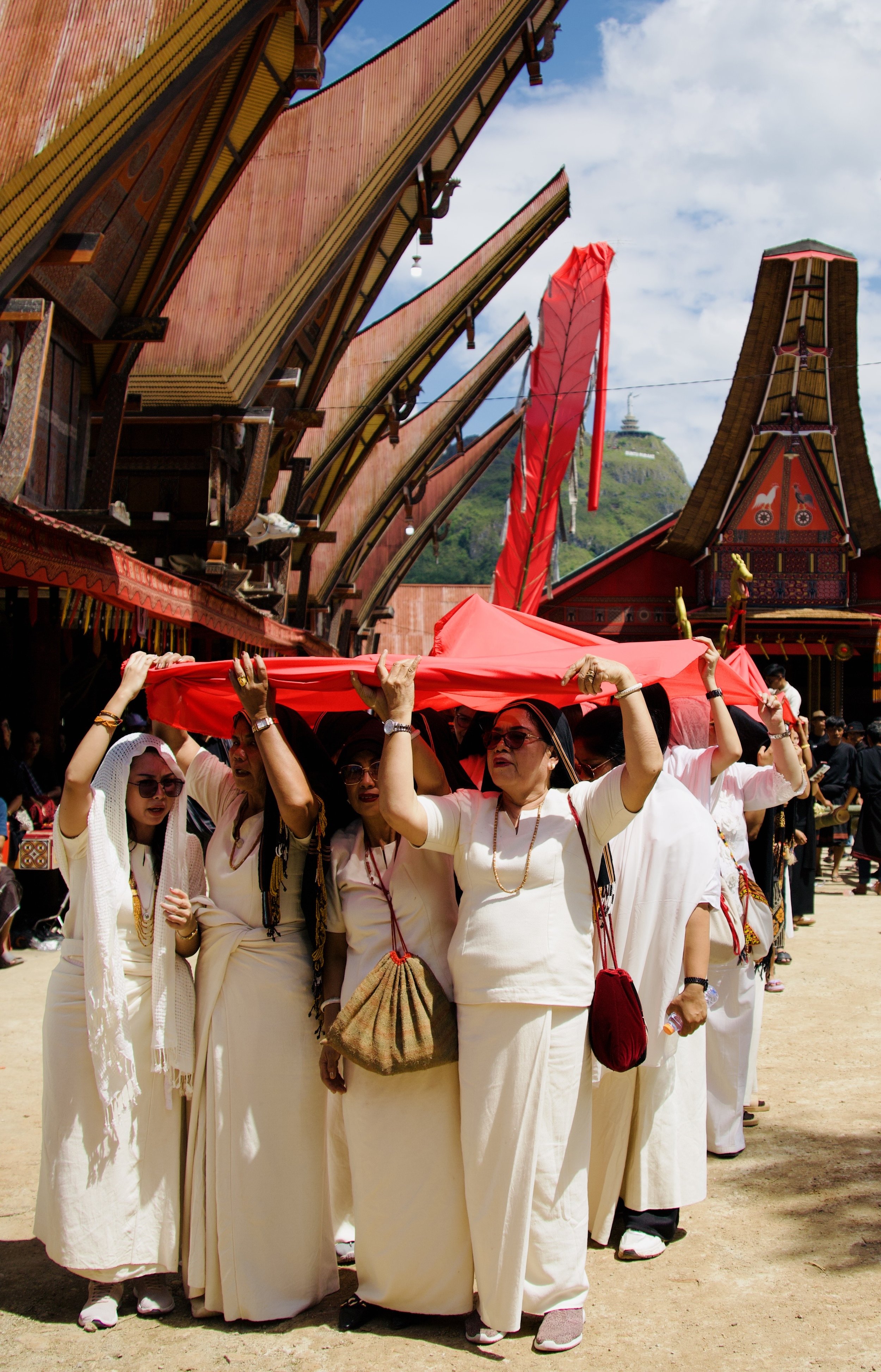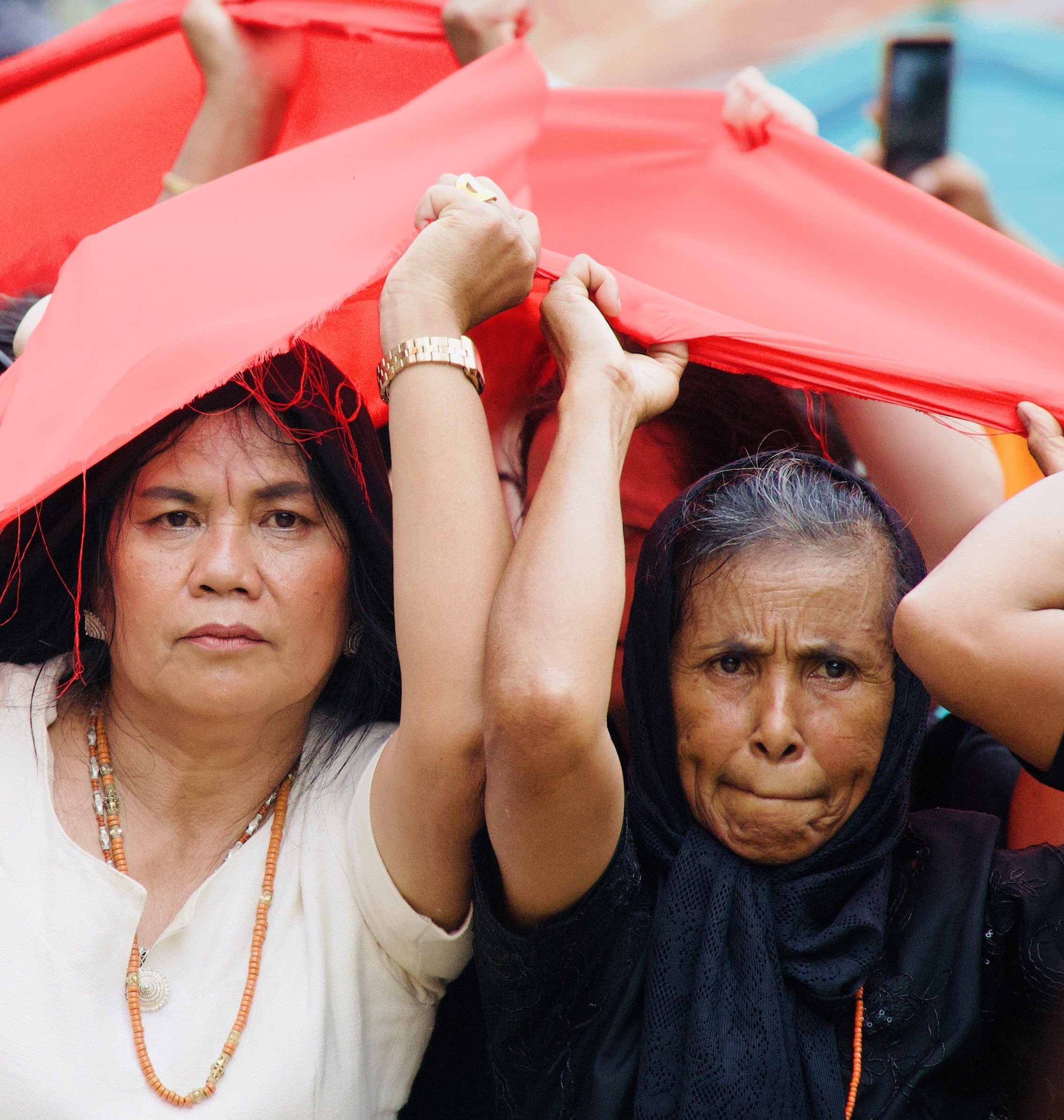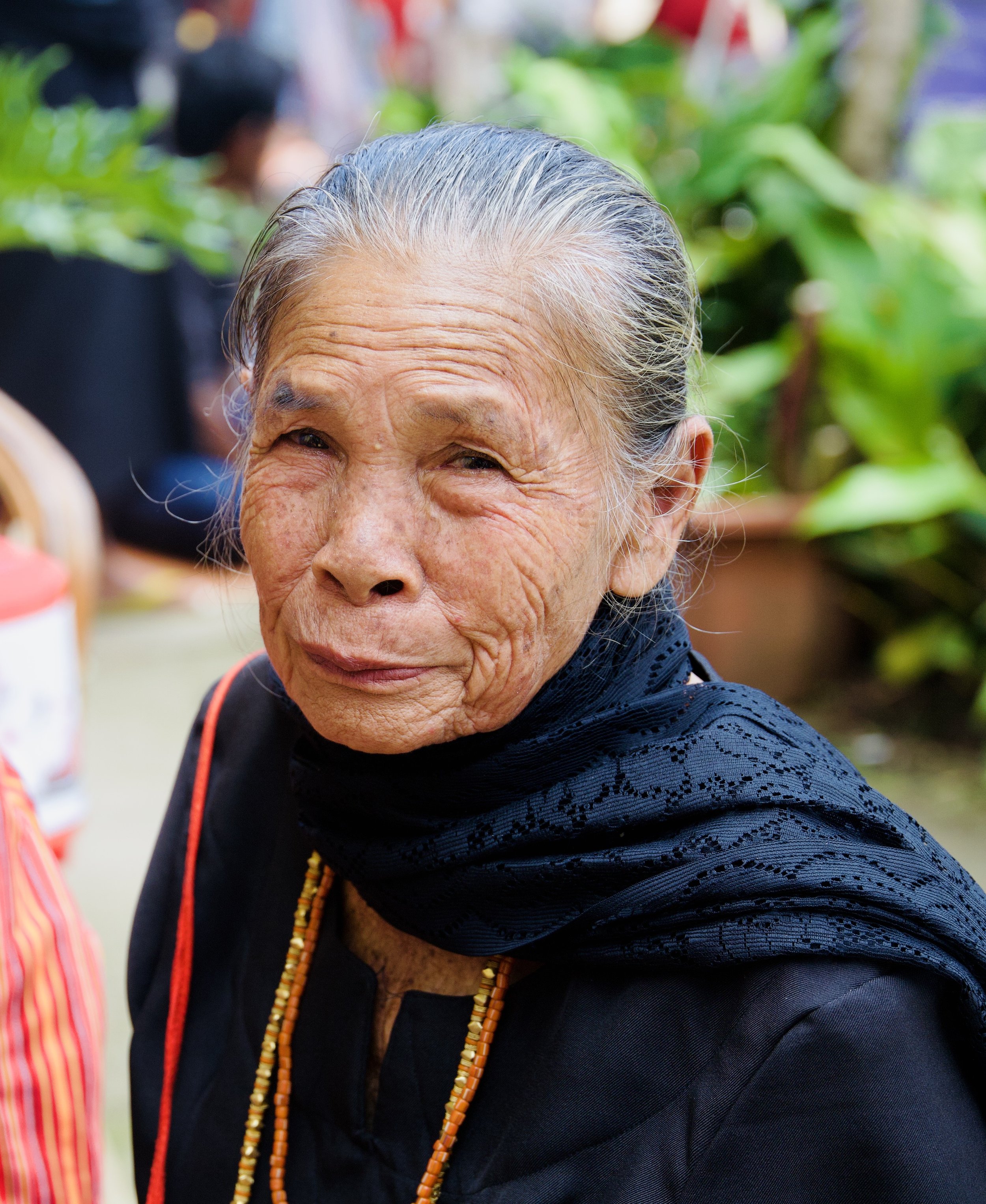The air was thick with the smell of blood, mixing with the earthy warmth and the distant hum of the ceremony. The Rambu Solo funeral, a high-caste Torajan ritual, was underway, lasting anywhere from three to five days. I stood quietly at the edge, watching the sacred proceedings unfold. The towering Tongkonan, with its sweeping roof like the horns of a buffalo, loomed over the gathering. More than just a house, it was a link to the ancestors, a place where spirits were honoured. The entire village had come together, united by tradition and respect for the deceased.
The Toraja believe that death is the start of a new journey. The funeral’s purpose is to guide the soul safely to Puya, the afterlife. Every act—every song, every sacrifice—played a role in ensuring the deceased reached their destination. Buffalo and pigs were vital offerings, acting as the bridge between worlds. Their blood, their bodies, were the conduit that allowed the spirit to travel.
The smell of blood filled the air as the animals were led out to be sacrificed. The drumming intensified, setting the rhythm for the rituals that would unfold. This was a transition, a preparation for the soul’s journey ahead.
Behind the coffin, a long red sheet was unfurled, held up by the family. The sheet, stretching across the procession like a banner, symbolised the connection between life and death. Red, the colour of life and blood, served as a protective barrier, shielding the soul from any spirits that might disrupt its passage. The family walked solemnly, carrying the sheet with reverence, ensuring the spirit’s safe passage to the afterlife. It was a sacred shield, a reminder that the living played an active role in the deceased’s journey.
The coffin, carved from wood, was carried through the crowd in a lively procession. Laughter and tears mixed, creating an energy that was both raw and celebratory. Funerals here were not quiet affairs, but a powerful blend of grief and joy, honouring both the life lived and the transition to the next.
At the ceremonial site, the Manimbong dance began. The community formed a circle, swaying together in time with the deep drumbeats. Each movement honoured the ancestors, a release and a remembrance all at once. Later, women pounded wooden poles into a trough, creating a steady, rhythmic beat that seemed to call the soul forward. The sound was hypnotic, a pulse that guided the spirit on its way.
The feast that followed was both a farewell and a celebration. Families gathered, sharing food, drink, and stories. I was invited to join them, eating buffalo, rice, and vegetables with my hands—the same buffalo that had been sacrificed just hours earlier. As the evening wore on, grief gave way to laughter. The shared meal and the company of others helped lift the heavy weight of loss.
The rites continued over the following days, led by the Toporenge, the spiritual guide. The Aluk To Dolo, the Way of the Ancestors, determined each step of the ceremony, ensuring that every part of the ritual was performed with care and respect.
By the end of the funeral, after days of rituals, sacrifice, and shared moments, it was clear that death wasn’t something to fear or rush. In a collective effort—each person playing their part, each moment adding to the journey of the spirit. As the final chants faded, I realised that the Torajans sent the deceased forward with everything they had. The community, bound by the rituals, ensured that the soul moved on, but the memory of the deceased would live on in their hearts, in their stories, and in the land that had once nurtured them.




























